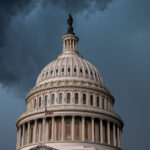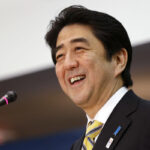
(Bloomberg) — President Xi Jinping made his first trip to China’s remote Xinjiang region since ordering the “strike hard” campaign eight years ago that targeted the local Uyghur population and soured ties with the US over alleged human rights abuses.
Most Read from Bloomberg
Xi made an “inspection” of the western region’s capital of Urumqi, where he “called for strengthening party organizations” and offering services “to benefit residents of all ethnic groups,” the official Xinhua News Agency reported late Thursday.
The Chinese leader spent Tuesday and Wednesday in the region, which he lauded as a “hub in Belt and Road cooperation,” referring to Beijing’s infrastructure initiative to expand its influence abroad. He also visited a museum where he urged the “better preservation” of minority groups’ cultural heritage and watched a performance by the Kyrgyz ethnic minority.
James Millward, professor of history at Georgetown University, called Xi’s public praise of the regional ethnic diversity the Communist Party has campaigned to disempower “erasure by inclusion.”
Xi’s comments were “clearly attempts to respond to the international criticism and voluminous evidence of his regime’s assimilationist policies,” Millward said. “Meanwhile, the bulldozers have razed shrines and mosques, religious faith is criminalized, and children are prevented from speaking their native language, unless it’s Mandarin.”
READ MORE: Why China and US Disagree on Forced Labor in Xinjiang: QuickTake
Xi’s trip to Xinjiang comes less than two weeks after he traveled to Hong Kong to celebrate its 25th anniversary of Chinese rule. The frontier regions were once two of China’s most-restive spots, with regular displays of opposition to the Communist Party. Under the 69-year-old’s decade of rule, however, dissent in both places has been crushed.
In Hong Kong, a Beijing-imposed national security law has locked up the political opposition and shuttered pro-democracy newspapers, while its electoral reform has ensured only party loyalists can hold office in the once free-wheeling financial hub.
The Chinese leader’s back-to-back visits of the cities some 2,000 miles (3,200 kilometers) apart demonstrates the vast breadth of Xi’s control, months before a twice-a-decade party congress that’s likely to hand him an unprecedented third term in power.
‘Strike Hard’
Xi’s visit to Xinjiang is his first since 2014, the year his government ordered authorities to “strike hard” against violence in the region. That year, terrorists used knives and bombs to attack a train station in Urumqi, killing three and injuring scores — part of a series of attacks that Beijing blamed on separatists.
Critics of Beijing’s rule said the violence was a response to heavy-handed intrusion as China’s dominant Han ethnic group was officially encouraged to move to the region and industries such as cotton growing, dairy farming and solar panel production expanded.
In the wake of those events, the Chinese government swept an estimated 1 million Uyghurs and other local ethnic minorities into mass detention camps for offenses as trivial as having a beard or downloading certain apps to phones.
The US claims those labor camps are part of a campaign of genocide against the Muslim majority Uyghurs, and last month enacted the Uyghur Forced Labor Prevention Act, which blocks imports from Xinjiang unless companies can prove they weren’t made by coerced workers. Beijing says it’s fighting terrorism and calls the facilities vocational training centers that teach valuable job skills.
In 2020, Xinhua quoted Xi as saying that “facts prove that the party’s policies on Xinjiang in the new era are completely correct and must be adhered to in the long term.”
(Updates with expert comment in the fourth and fifth paragraphs.)
Most Read from Bloomberg Businessweek
©2022 Bloomberg L.P.




